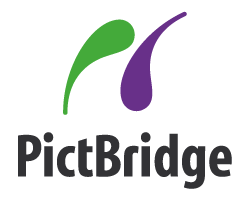PictBridge

PictBridge is an industry standard from the Camera & Imaging Products Association (CIPA) for direct printing. It allows images to be printed directly from digital cameras to a printer, without having to connect the camera to a computer. Its formal name is "Standard of Camera & Imaging Products Association CIPA DC-001 — 2003 Digital Solutions for Imaging Devices". [1]
PictBridge is typically implemented using Universal Serial Bus ports and the USB protocol. PictBridge-capable printers typically have a USB Type A receptacle which is then connected by cable to the USB port of a PictBridge-capable digital camera (typically a Type Mini-B). The user selects the images on the camera, which the printer retrieves and prints.
Proprietary ownership
PictBridge is sometimes described as an open standard, whereas in fact the specification can only be obtained from CIPA after agreement not to disclose any information from the specification to others (section 2.2 of the agreement). For example, this probably means that PictBridge cannot be implemented by free software or open source software other than by reverse-engineering the protocol (perhaps aided by the white paper that CIPA provides), if publishing source code of an implementation of the PictBridge standard counts as “disclosing information” from the specification.
A printer may implement much the same function as a PictBridge printer without the non-disclosure agreement by treating the camera's memory as a USB mass storage device.
